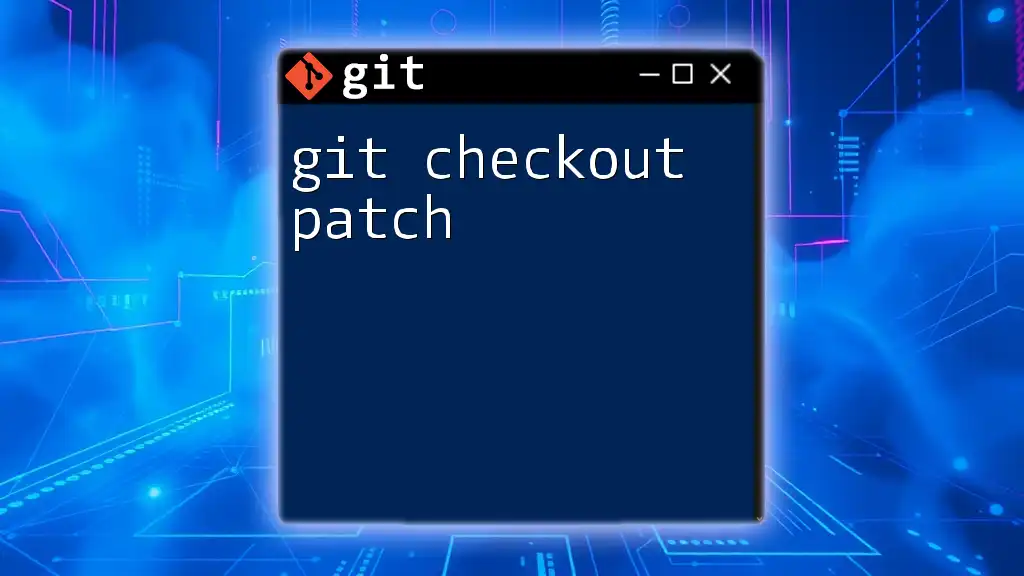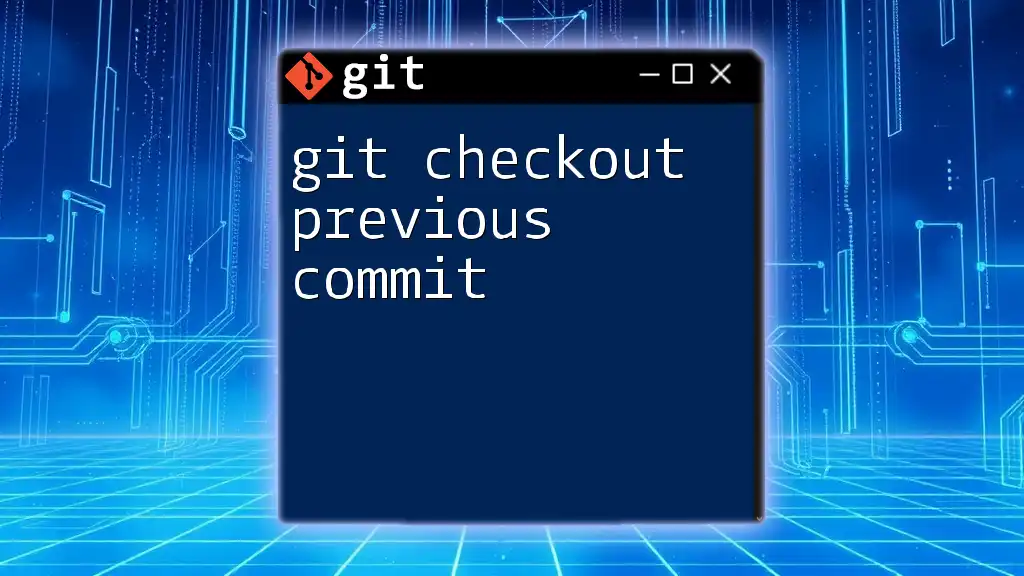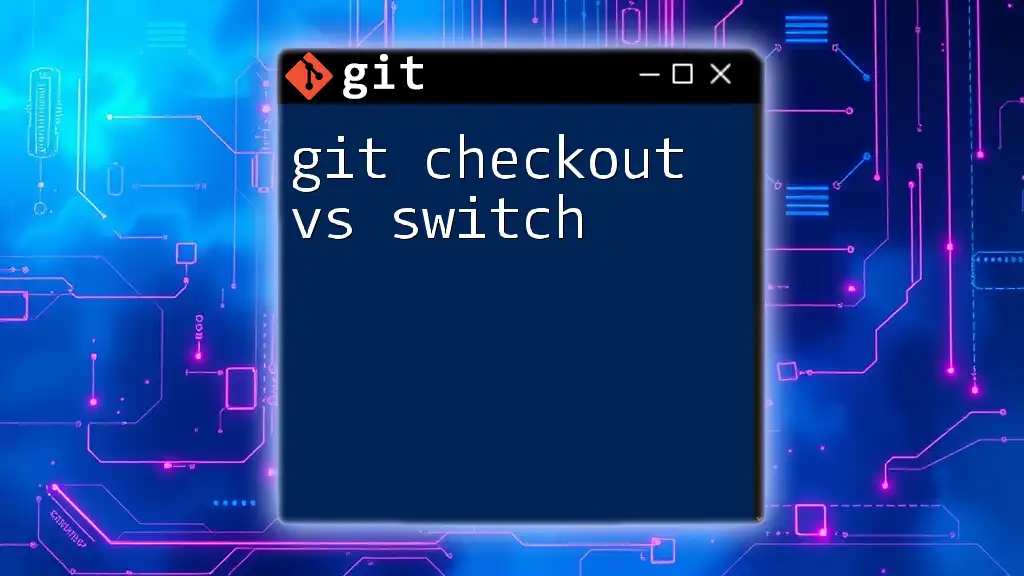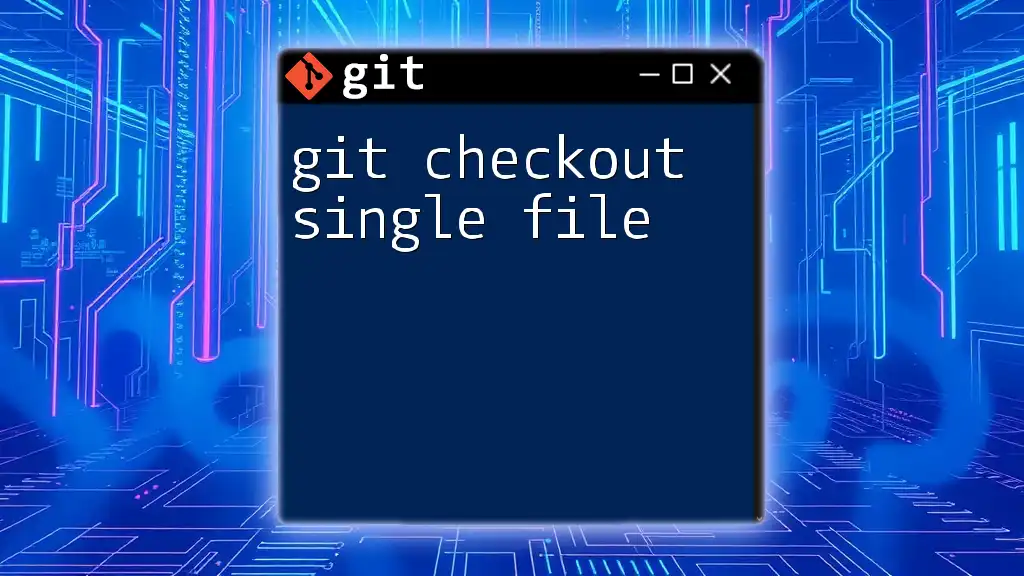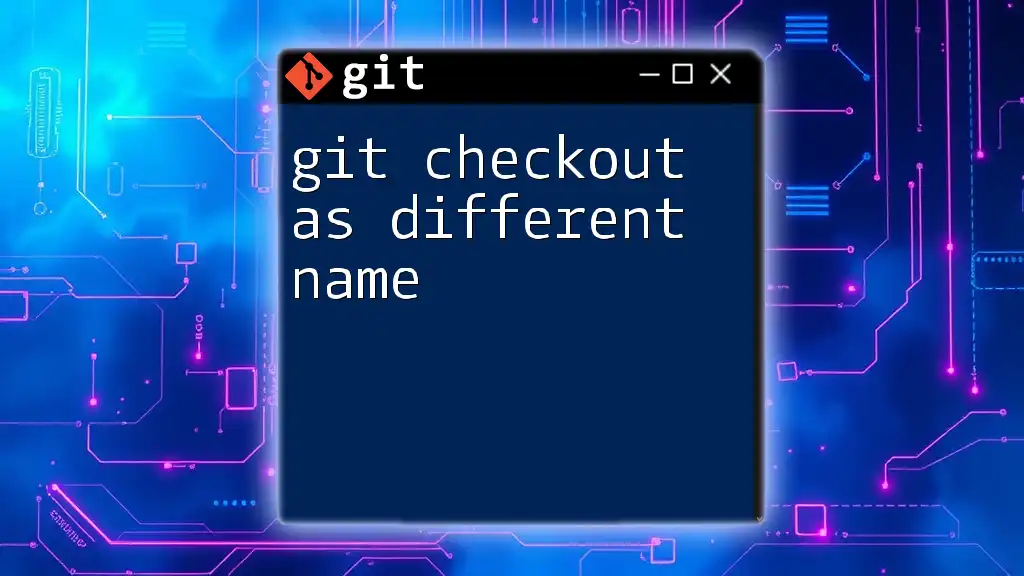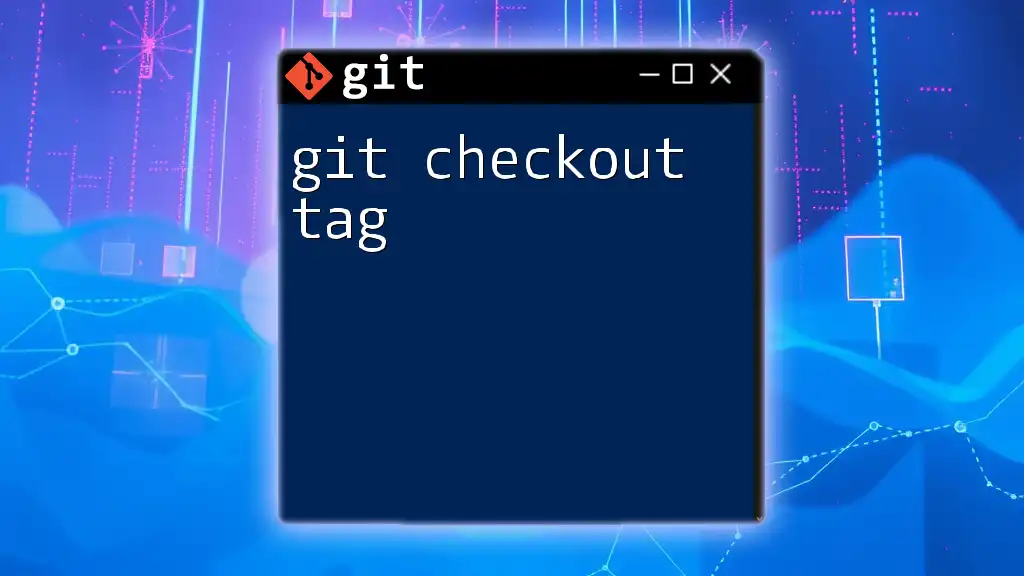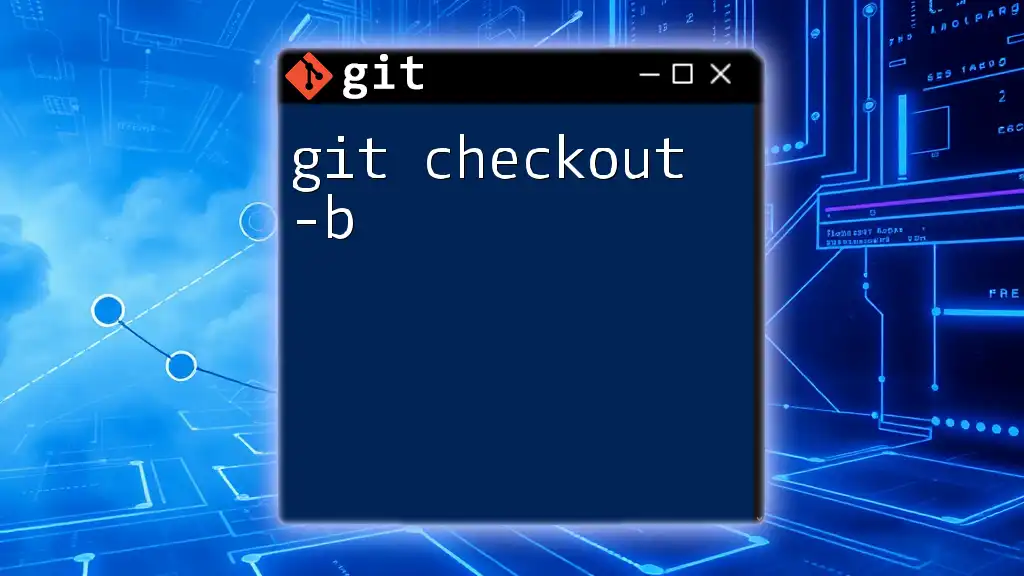The command `git checkout master webui` is used to switch to the `master` branch and check out the `webui` directory as its state from the last commit, but note that typically, you would check out just the branch with `git checkout master`.
Here's how you can use it:
git checkout master
If you want to check out changes related to the `webui` directory, you might do:
git checkout master -- webui/
Understanding Git Checkout
What is `git checkout`?
The `git checkout` command is a powerful tool in Git that allows users to navigate between different branches in a repository. It also enables you to restore files from different points in your project history. In essence, `git checkout` is about switching context—whether that means moving between branches or simply reverting files to a previous state. Mastering this command is a crucial aspect of any developer's skill set.
Syntax of `git checkout`
The basic syntax for the `git checkout` command is straightforward:
git checkout [branch-name | commit-hash | -- <file-path>]
Here’s a breakdown of its parts:
- `branch-name`: The name of the branch you want to switch to.
- `commit-hash`: Specifies a certain commit to check out, letting you view the state of the project at that point.
- `-- <file-path>`: You can also restore a specific file to its last committed state.
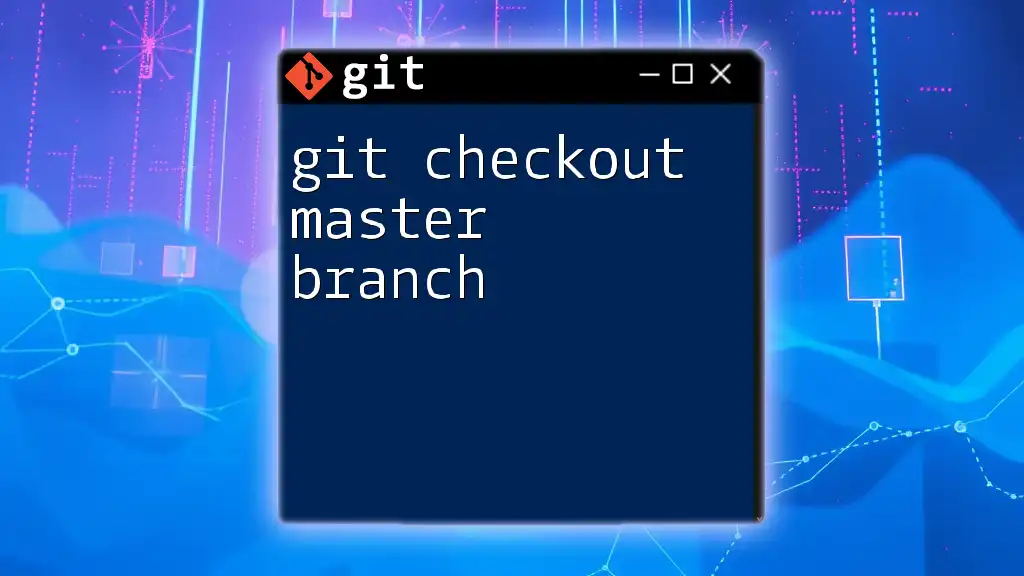
The Concept of Branches in Git
What are branches?
Branches are effectively parallel versions of your code. Each branch can contain different implementations, features, or fixes without impacting the main codebase until they are merged. The `master` branch is traditionally where the stable version of your code lives. It’s often considered the cornerstone of your project, representing your product's current official release.
Importance of the `master` branch
Historically, the `master` branch serves as the main branch where production-ready code resides. It is often the default branch that is checked out when you clone a repository. While some projects are moving towards using alternative names such as `main`, the master branch continues to hold importance in many workflows. Best practices dictate that all significant releases and updates should originate from or be merged into the master branch.
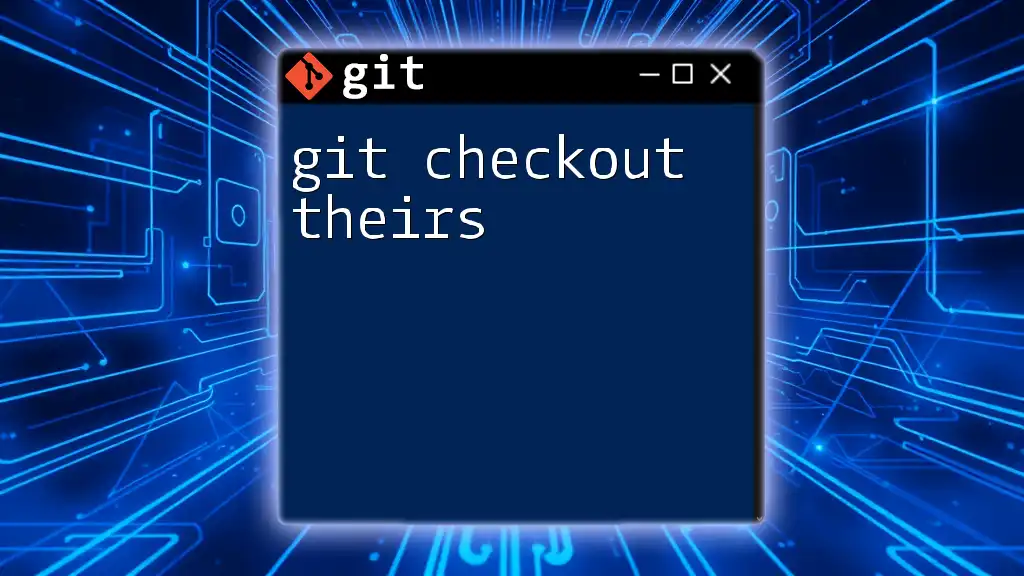
The `webui` Reference
What does `webui` mean?
In software development, especially in web applications, `webui` typically refers to the user interface design elements specifically for web environments. This might include HTML, CSS, and JavaScript components that users interact with.
Understanding the use of `webui` in `git checkout`
When using `git checkout master webui`, you are likely aiming to switch to the `master` branch (if on another branch) and might be intending to then change the working directory to apply the `webui` context. This could imply that there are unique changes or updates regarding the web UI that you want to focus on. The naming conventions for branches help keep your workflow organized and more understandable to the entire team.
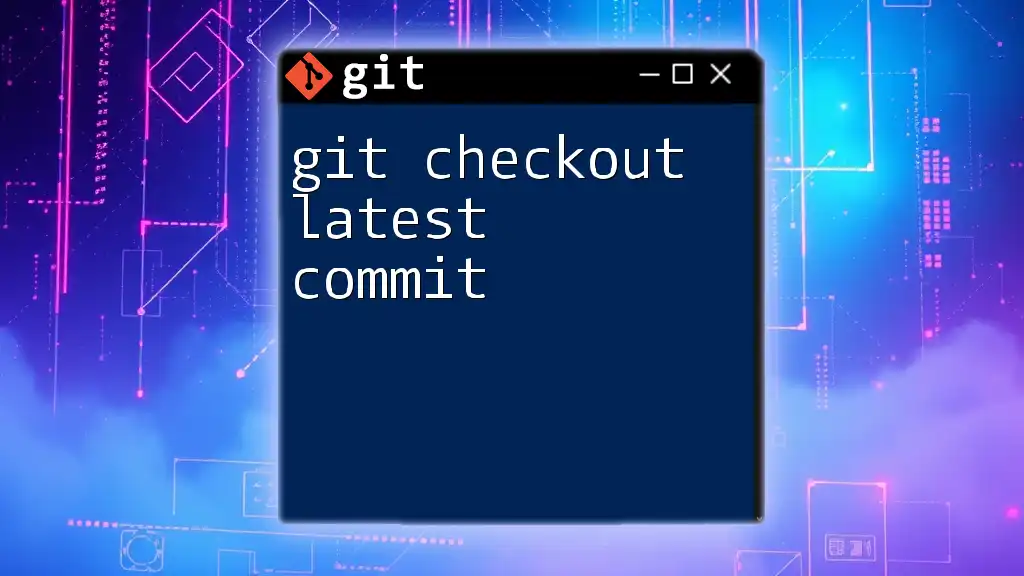
Practical Examples of `git checkout master webui`
Example 1: Switching to the `master` branch
To switch to the `master` branch, you would use:
git checkout master
Executing this command informs Git that you want to work with the latest code residing in the master branch. If everything is up to date, you will be in a good position to pull any new changes or start working on a new feature.
Example 2: Switching to a branch named `webui`
If you aim to switch to a specific branch named `webui`, execute:
git checkout webui
This command allows you to transition into the web user interface branch, where specific modifications and development related to the web interface are being carried out. If those changes are significant, you might want to ensure that your local repository is synced before switching.
Example 3: Combined usage of `git checkout`
You can also combine commands to streamline your workflow. For instance:
git checkout master && git checkout webui
Here, you first switch back to the `master` branch and then proceed to switch to the `webui` branch. This is particularly useful when you want to ensure that you aren’t making changes in another branch without first verifying the current state of the master branch.
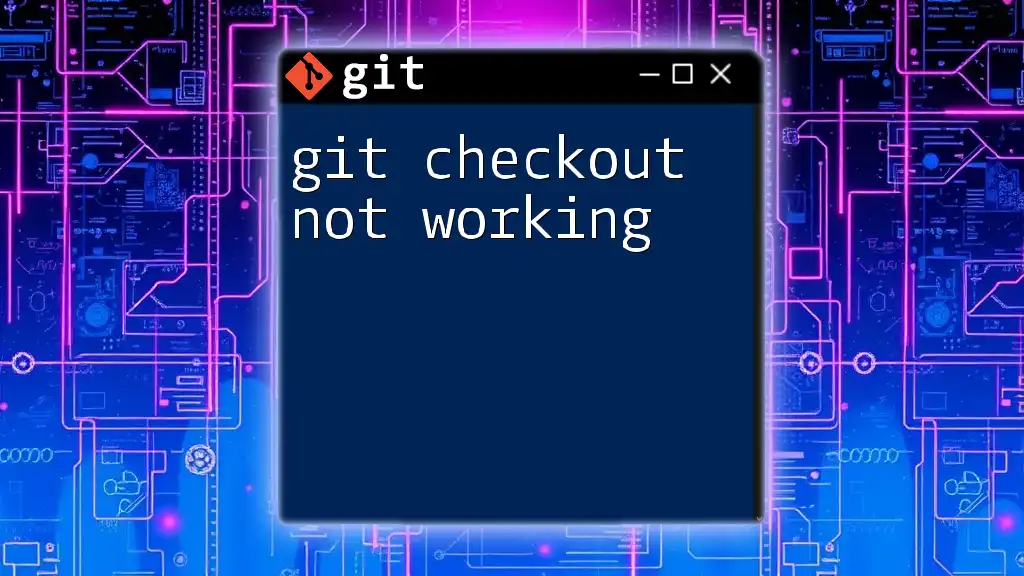
Troubleshooting Common Issues
Errors when using `git checkout`
When using `git checkout`, you may encounter common error messages. For instance, if you see:
error: pathspec 'webui' did not match any file(s) known to git
This typically indicates that the `webui` branch does not exist in your local repository. To resolve this, check for the list of existing branches with:
git branch
If `webui` is supposed to exist, make sure you have fetched the latest updates from the remote repository:
git fetch origin
Version control issues
Switching branches can sometimes lead to merge conflicts, especially if you have uncommitted changes. It’s best practice to commit or stash your changes before doing so. Here's how you can stash:
git stash
After resolving any conflicts or moving to the desired branch, you can apply your changes back with:
git stash apply

Best Practices for Using `git checkout`
Tips for managing branches
- Use descriptive names for branches: Clear and specific branch names, such as `feature/webui-update`, help that ensure the purpose of each branch is easily identifiable.
- Regularly update the master branch: Keeping your master branch up-to-date reduces integration headaches later on.
- Commit discipline: Frequent commits lead to less complicated branches, making it easier to navigate with `git checkout`.
Managing workflow with GUI tools
While the command line is powerful, GUI tools for Git like SourceTree or GitKraken can simplify the `git checkout` process. They provide visual insights into your repository structure, making it easier to manage branches without memorizing commands. Using a GUI can be particularly beneficial for beginners or for those who prefer visual representation over command-line jargon.

Conclusion
The `git checkout master webui` command encapsulates the fundamental aspects of navigating branches and maintaining organization within your Git repository. By understanding the intricacies of using `git checkout`, you deepen your capability as a developer, making your collaboration and product management efforts more effective. Remember, practice is key—so experiment with different commands and workflows to enhance your Git proficiency!

Additional Resources
For further reading and a more profound understanding of Git, check out the official Git documentation, and explore online tutorials. Investigate Git GUI tools and their respective usage guides to improve your workflow management.







